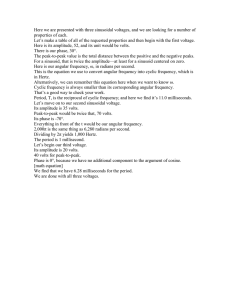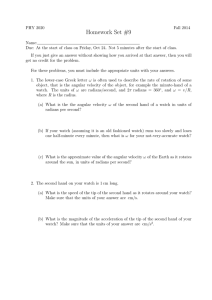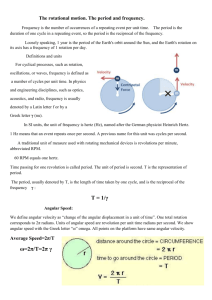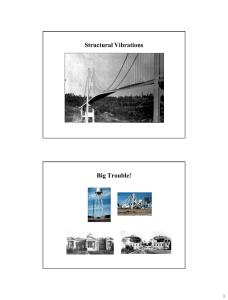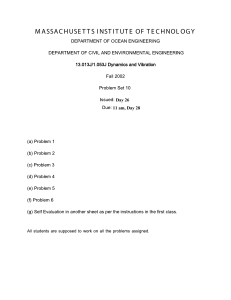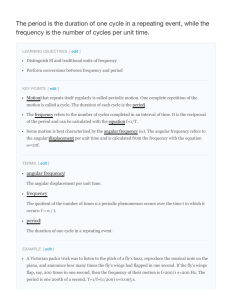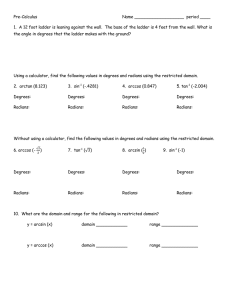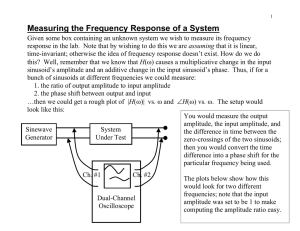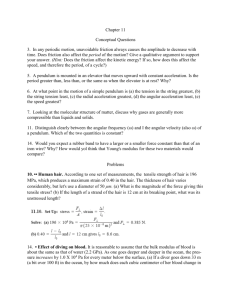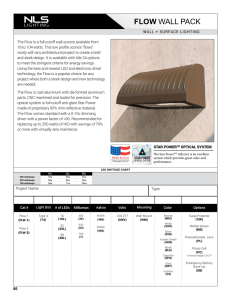Here we have a table that describes some properties for... We would like to write down each of these currents...
advertisement
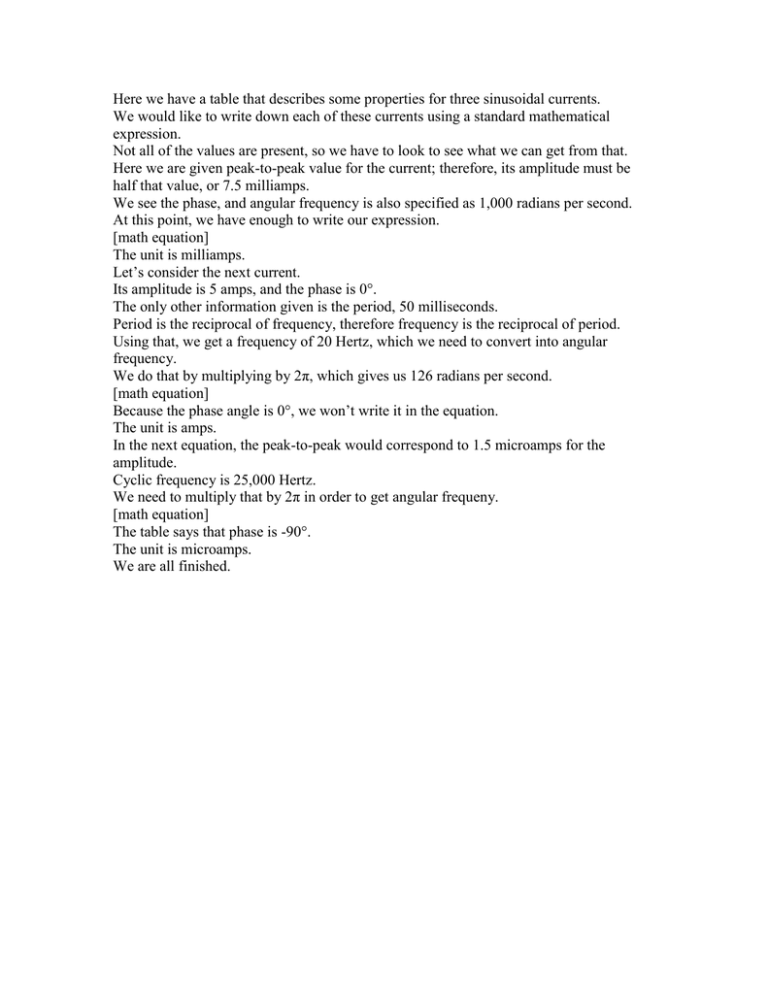
Here we have a table that describes some properties for three sinusoidal currents. We would like to write down each of these currents using a standard mathematical expression. Not all of the values are present, so we have to look to see what we can get from that. Here we are given peak-to-peak value for the current; therefore, its amplitude must be half that value, or 7.5 milliamps. We see the phase, and angular frequency is also specified as 1,000 radians per second. At this point, we have enough to write our expression. [math equation] The unit is milliamps. Let’s consider the next current. Its amplitude is 5 amps, and the phase is 0°. The only other information given is the period, 50 milliseconds. Period is the reciprocal of frequency, therefore frequency is the reciprocal of period. Using that, we get a frequency of 20 Hertz, which we need to convert into angular frequency. We do that by multiplying by 2π, which gives us 126 radians per second. [math equation] Because the phase angle is 0°, we won’t write it in the equation. The unit is amps. In the next equation, the peak-to-peak would correspond to 1.5 microamps for the amplitude. Cyclic frequency is 25,000 Hertz. We need to multiply that by 2π in order to get angular frequeny. [math equation] The table says that phase is -90°. The unit is microamps. We are all finished.
